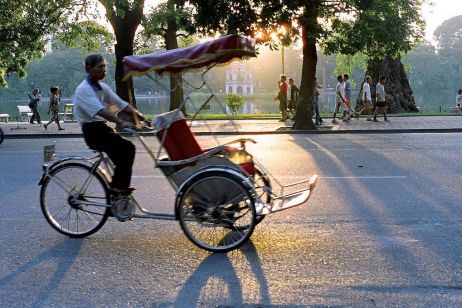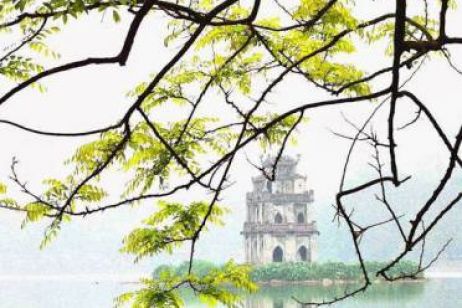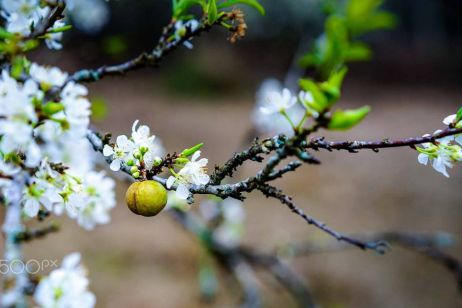18 Things to Know about Sapa
There will always be places that get under your skin. Places that you’ll remember and feel like some day you’d like to return. Sapa Valley is one of those places for me.
Sapa is a lovely hill station town in Northern Vietnam near the Chinese border. The region as also known as “the Tonkinese Alps” and it’s culturally rich with different hilltribe minorities, lush mountain ranges, rice fields and an overall, breathtaking views! Once there, you’ll easily understand what the hype is all about.
Shops selling tobacco, trekking clothes and souvenir crafts from the hill tribes will help you burn your dong, but nothing beats a good massage! The town is completely walkable but if you want to explore outside of town, it’s best to do it by motorbike if you can.
1. Getting to Sapa
There’s two ways to get to Sapa- by over night train or bus. The train from Hanoi to Lao Cai station takes around 9 hours. After arriving into Lao Cai station, you’ll need to hire a shuttle bus or taxi to Sapa town.
There are sleeper buses that you can book through your hotel from Hanoi to Sapa station
2. Roads to Sapa are winding, minibus drivers can be reckless
It takes about one hour to get from Lao Cai to Sapa and the roads wind. Both coming and leaving, there was at least one passenger who got sick. It happens. Cost for this shuttle bus is anywhere from around $2.50-$3.00.
Tip: Bring a plastic bag for emergencies.
3. A room for one can be spacious
So the thing people say about being a solo traveler and having to deal with single supplement fees?.. I finally had to deal with it. All of $3 more. On D Phan Si/Fansipan Road, I was put in the Cat Cat Hotel. My room had a shared outdoor deck, an awesome view and I had three beds all to myself. At night, it was especially romantic with the misty mountains outlined against the night skies and… stars! Check out hotels in Sapa.
My room was clean, I had hot water and after my horrible hotel in HCMC, it was a definite luxury!
4. Sapa has a problem with touts
“You Buy” and “Buy from me”, you’ll hear on the streets. The Black Hmong women and children are everywhere, stalking tourist hotels to doggedly selling their wares. If you buy from one child, beware… you’ll tempt more children, who want you to patron their products as well. It’s a real problem- the kids come all the way from their villages to sell souvenirs to help support their families and sometimes they sleep in the market or don’t attend school.
Tip: Never answer a tribes person with a “Maybe”, unless you mean it. They’ll follow you until you purchase something. Also, try to be socially responsible with your purchases or gifts. Gifting children with pens can encourage future begging, while giving them sweets is often bad for their teeth.
5. Hire a trekking guide
If you haven’t guessed by reading my Vietnam posts, Sapa Valley is known for its hilltribes and trekking. The hilltribe minorities make up the majority of trekking guides in Sapa. Afterall, they’re showing you their backyard. In this case, it’s best to hire directly through a hilltribe agency group in Sapa versus your hotel or a Vietnamese trekking agency, as the hilltribe will only get a small fraction of that money.
However, because I didn’t know you could do this, I booked an all-inclusive tour to Sapa in Hanoi. Read my post on How to book a budget tour in Vietnam without getting ripped off! (more on the tours I took in Vietnam)
6. Trekking to villages requires permits
Some villages will have pay stations at the entrance. You will need to show a permit, which is bought in advance at the tourist information center in town. If you don’t have it upon arrival, you’ll need to go back to town to buy one. If you’re with a trekking tour, it’s likely this is already covered in the fee.
7. Sapa Market can be intense
A walk along D Phan Si Road, merges you with Sapa Market, a small fresh market for locals. It isn’t any different from other local markets, selling produce, herbal remedies and meats. The part about this market that gets intense is their meat department. Freshly-killed you’ll find anything from chickens feet, horse legs, even dog. It was enough to give me culture shock with their food.
8. Shopping for Hill Tribe crafts and fabrics
The crafts of the Hmong and Red Dzao tribes are interesting souvenirs to bring back. The Hmong have a certain flair for fashion, while the Dzao lends better to jewelry. There are two main places you can shop for their products
Above Sapa Market are a couple of co-op shops run by the Black Hmong & Red Dzao. There, they sell bags and apparel of genuine quality and pride. The style and outfits that the Hmong wear are stylish for a hilltribe. The casual Hmong wardrobe has layers such as tux-like vests and wrap-around belts, all designed with a folksy flair . I decided to buy a Hmong vest and belt
9. Shopping at Sapa Square
Sapa town’s Main Square: A 5 minute walk to the Main Square, you’ll find hill tribe vendors with crafts ranging from bags, wallets and pillow covers.
10. Beware, the dye on the crafts run
You might notice how many older Hmong women have blue-stained hands. It’s from the indigo dye they use in their fabric work. Although the Hmong make beautifully-colored crafts; the dye in them is not quite set and must be cured before wearing or using.
Tip: If you buy these products, you must: 1) keep them separate from your clothes and 2) set the dye before you wear/use any of them (usually several washes with vinegar and salt should help, but it will take time for the dye to seal itself in the fabric)
The elder woman in the middle shows me the hemp string they use to stitch their crafts with. Notice how her fingertips are stained blue?
Why? The moment it gets wet, the ink will stain whatever it touches. Take warning from my travel friend, David (below), a Parisian with a great sense of humor. He wore one of the Hmong belts as a bandana on our trek and proved that indigo dye theory correct.
11. Cat Cat Village trek
The trek to Cat Cat Village is one that requires a permit from the Tourist Information Center before entering the checkin station. It’s a leisurely stroll (about 20-30 minutes) down a sloping hill and follows a cobblestone path through the village and down to a waterfall. If you’re so inclined, you can take a short trek from the base winding back up to the top. The village is picturesque but at instant glance is constructed largely for tourists. The Hmong homes residing there are set up as souvenir shops that tourists peruse.
12. Massages are cheap
Thailand isn’t the only country to hold copyright on cheap massages. You can find them in Vietnam too and Sapa has a few salon and massage parlors for you to try. Foot and body massages can be gotten for around $6 /hour and the Vietnamese are experts at making your feet and body feel like it has wings! It’s easy to get addicted.
13. P.Cau May road is the main drag
As main road that runs through the heart of town, P Cau May houses international restaurants, cafes, clothes, massage and souvenir shops.
14. Sapa Radio Tower : the best view in town
It’s said to be the easiest hike in Sapa. Getting to the Sapa Radio Tower has a 360 degree view, which is said to be priceless.
15. Bring or buy poncho
It rains and around winter time (November to February) it can get very cold. If you don’t have one, you can always buy them at a local trekking shop in Sapa.
16. Bring trekking shoes or rent rubber boots
During winter time, it can rain a lot and the paths are muddy. If you’re trekking, you’ll want good shoes. Some paths can be narrow and with the mud, very slippery. Good trekking shoots will give you traction.
17. Trekking clothes shops, no problem!
There’s a good handful of shops which sell trekking clothes from shoes to ponchos, backpacks and apparel. Some will be knock-off shops selling counterfeit brands such as NorthFace.
18. Variety of Food
Sapa has a good selection of international restaurants, cafes and street food to choose from. P Cau May road houses many international food joints, while the street perpendicular and aligning with Sapa Square strings a walkway of Vietnamese street food, where you can sit in the open on plastic chairs on the sidewalk to eat.
The food in Sapa bats eye-to-eye with Hanoi. So far, it’s the best food I’ve had my entire trip! The food was fresh, made with care and well-flavored. Below is my lunch at a cafe. Fresh tomato soup made from scratch. Delicious!
Vietnam Travel Guide
Tour Related
Vietnam Honeymoon
0 reviews
Hidden Beauty Of Vietnam's Highland
0 reviews
Homestay Experience In Mekong Delta
0 reviews
Pu Luong Trekking & Homestay
0 reviews
Southern Vietnam Family Experience
0 reviews


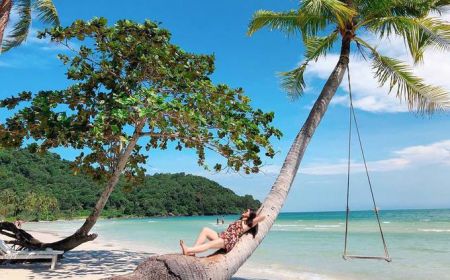
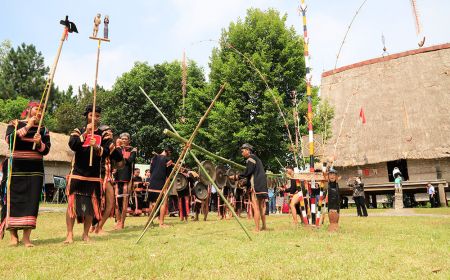
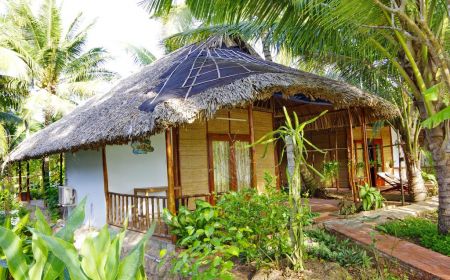
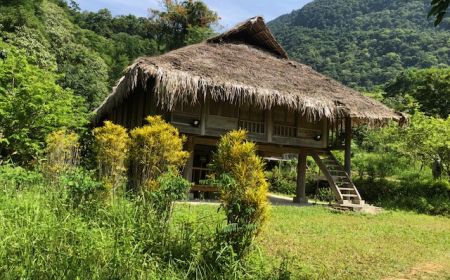
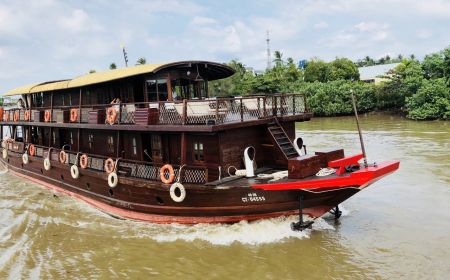
.jpg)
